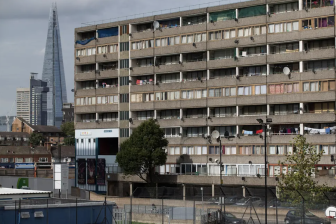
Proactive Dutch ‘neighbourhood teams’ help vulnerable young people quicker
Dutch municipality neighbourhood teams which actively approach vulnerable young people who need help are more effective than in areas which have to ‘passively’ wait for referrals.
The government has been analysing the effectiveness of neighbourhood professionals, or ‘wijkprofessionals’, who play an increasingly important role in helping young Dutch people to grow up safely in their cities and towns.
And now a study by The Netherlands’ Central Planning Bureau (CPB) says that in cities and towns which have these teams, help for young people who are in low-income areas and/or are migrants, works much better than in municipalities which only have referral services.
The CPB says that in areas where neighbourhood teams can be more pro-active in targeting those who might need help, the use of youth services by children from low-income families grew by around 23 per cent last year. For young people from migrant backgrounds, this figure increased by 40 per cent.
Young people from low-income parents and young migrants generally receive less youth care than other young people than might be expected, and this is down to a combination of language and cultural barriers, lack of knowledge of the care system and mistrust in institutions. In addition, they are also categorised as ‘hard to reach’ target groups where, often, there is a ‘hidden demand for care’.
‘Active neighbourhood teams ensure a safer climate’
Jitty Runia of the Netherlands’ Youth Institute (Nederlands Jeugdinstituut) said: “This is an interesting result. Active neighbourhood teams therefore reach the target group you want to reach. It is not yet known whether the increasing use of youth care through the active neighbourhood teams entails additional costs or leads to savings in the long term.
“Research should show to what extent active neighbourhood teams prevent more intensive care, and what that active deployment entails, so that these groups feel seen, heard and helped. There are, however, indications from research that active neighbourhood teams ensure a safer climate and more social cohesion in neighbourhoods, which in turn contributes to less use of youth care.”
The institute recently published a guide (Dutch only) outlining the role of neighbourhood professionals, highlighting the valuable role that they can play to help with some of the problems experienced by young people in urban areas. It also provides practical examples for other professionals to learn from.
Jitty Runia added that the results of the CPB study could also form an important part of discussions about the reform agenda that is currently being devised to help ‘future-proof’ the youth care system. “If new measures are introduced for access to youth care, it is important to pay attention to how they will work out for the groups that the active neighbourhood teams can better reach.”




